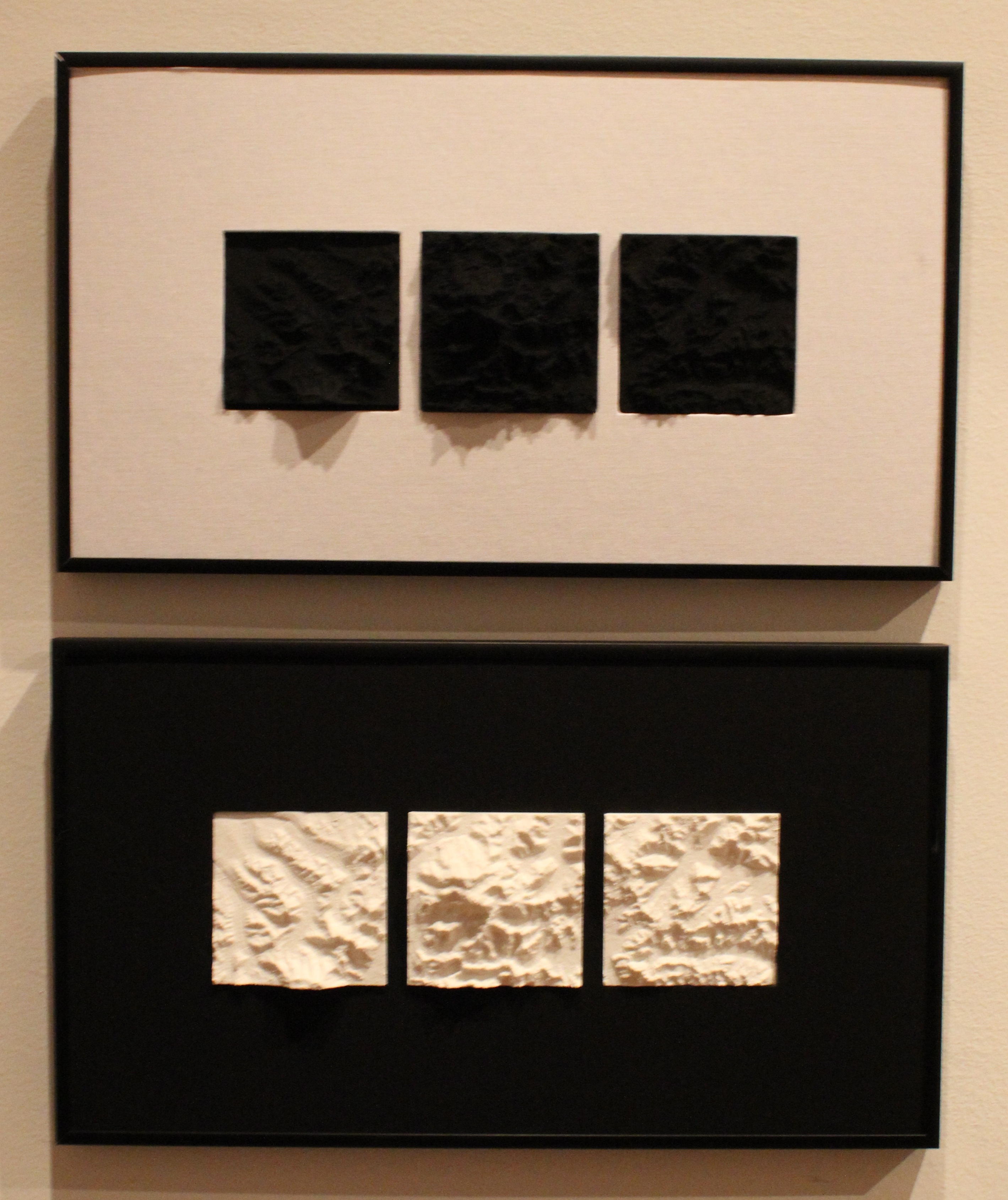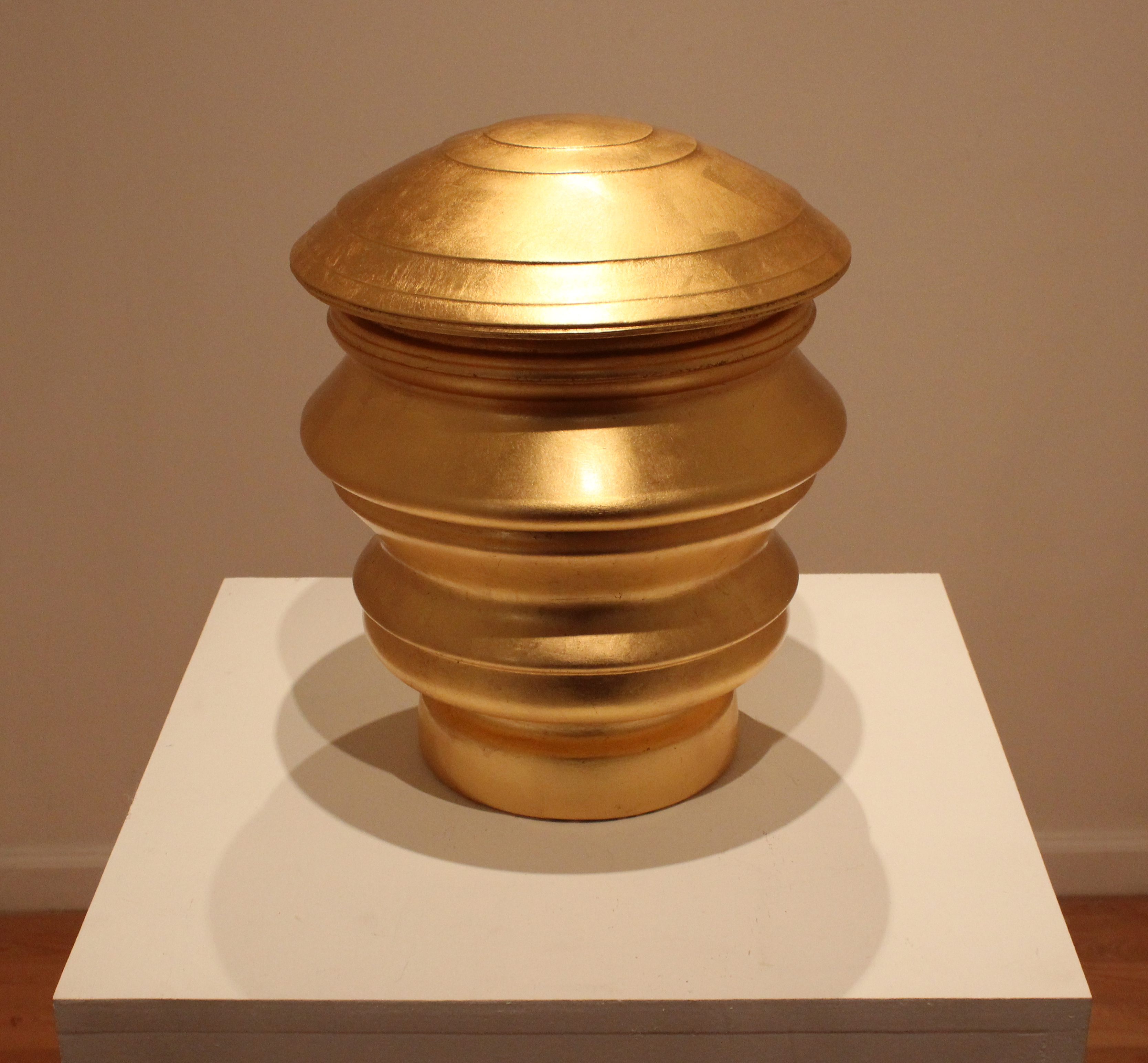
CRUXspace outputs political, geographical and social media messages for Philly Tech Week
Above: Leo Hylan, “Baltimore Love?” Photos by Chip Schwartz.
Just north of Girard Avenue in Philadelphia is a nondescript grayish building with no signage, short of the tiny placard on the front door that reads CRUXspace. Inside, however, sits a freshly constructed gallery space for experimental new media art. Currently, it is occupied by a menagerie of art made by computers–with some human direction, of course.
“Output Art,” curated by InLiquid Art + Design in conjunction with Philly Tech Week, contains digital creations by Jeff Brown, Bill Cromar, and Leo Hylan. The works are generated by a procedural approach that includes the gathering of data, the running of an algorithm, and finally outputting the final product.
In real time, we find the work of Leo Hylan, including “Twitter Zombie,” which scours the content of Twitter and ultimately regurgitates the information it digs up. Oftentimes this undead social media amalgamation reflects what is trending and may even be directed by hashtags that are tweeted at it, but in the end, it remains essentially random.
Adjacent to this is “Baltimore Love?,” which similarly gathers data, however this time specifically in reference to the 2015 Baltimore protests. All of the images it finds are layered into one composite, with bits and pieces of the most-shared content cutting through. The most evident section is a billboard reading simply “We Love Baltimore.” Hylan explains that, in searching for information about the events in Baltimore, vastly different results emerge depending on the language. If one inputs “Baltimore uprising,” for instance, the content is notably different along political lines than if one inputs “Baltimore riot.”

Jeff Brown, “Black Triptych: Denali 64N 152W.”
The rest of the show is significantly more static than these pieces, and relies heavily on 3D modeling and printing. Jeff Brown, for his part, creates a series of sculptures entitled “Grand Canyon Redux” in which he utilizes existing geographical data to design ultra-small landscapes. Using either a 3D printer or a CNC router, Brown either prints or carves mammoth features onto pocket-sized squares. The Grand Canyon, Yellowstone and a selection of glaciers and mountain ranges are condensed and commodified into handheld textures that look more like bathroom tiles than famous features of the earth.

Bill Cromar, “Continuous Bust (Head of Trump).”
To round out the show, quite literally, there is the work of Bill Cromar, who directly references a piece by Italian Futurist artist Renato Bertelli. In Bertelli’s sculpture, he took a bust of dictator Benito Mussolini and rotated it 360 degrees, resulting in an eerie cylindrical form. In Cromar’s case, he utilized a 3D printer to replicate Donald Trump’s open-mouthed head in the same way. After casting the form in plaster, he appropriately coated it in a gaudy layer of gold leaf. The result is nearly unidentifiable, and yet its analogue makes Cromar’s anti-Trump political statement abundantly clear.
All three artists will have their work on display at CRUXspace through June 17.
CRUXspace is located at 700 W. Master St., Philadelphia.
Recent Content
-
Artsarticle ·
-
Artsarticle ·
-
Artsarticle ·
